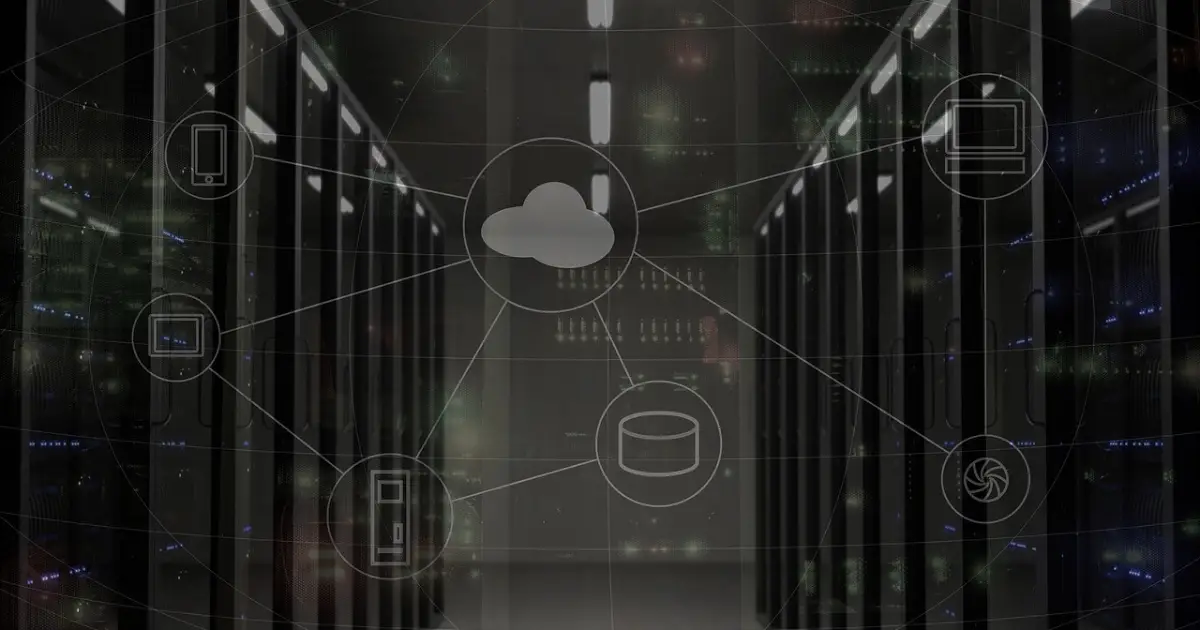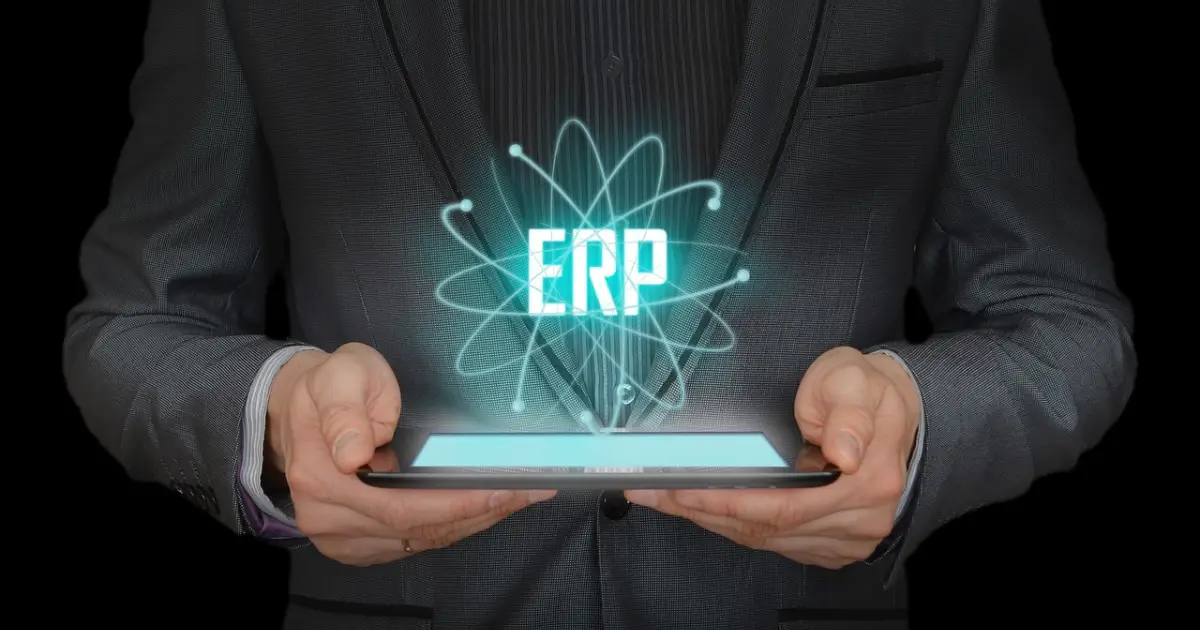focus notes


What are the steps to implementing ERP? We explain the specific process, how to proceed, and how to avoid failure.

table of contents
What is the process for implementing ERP?
"We are considering introducing ERP, but what do we need to decide in advance?"
What should you do first when implementing ERP? There may be many people who are worried about this. There are four basic steps to implementing ERP.
- Plan the implementation of ERP
- Define ERP requirements
- Implement ERP
- Start operating ERP
Advance preparation is very important when implementing ERP.In order to successfully implement ERP, be sure to do everything in your power.
Therefore, in this article, we will explain in detail everything from the rough implementation schedule of ERP to the implementation process and how to avoid failure. If you want to understand the steps to implement ERP, please use this as a reference.
Explaining the ERP implementation procedure (schedule)
There are the following four stages as a rough implementation schedule for ERP.
- Planning ERP implementation
- Define ERP requirements
- ERP implementation
- Operate ERP
1. Planning ERP implementation
First, let's start with planning for ERP implementation.The following decisions should be made at the planning stage:
| Examples of things to do | Concrete example |
|---|---|
Setting the implementation purpose | Improve business efficiency Cost reduction Improved data management |
Analysis of current situation | Confirm business process Understanding system status Analyze the problem |
Check budget and resources
| raising funds Securing personnel Check time (schedule) |
A typical example is setting the purpose of implementing an ERP system, in other words, what you want to achieve. Examples include "improving operational efficiency, reducing costs, and improving data management." By setting a clear purpose, it is difficult to deviate from the desired functions of the ERP.
Next, we will analyze the current situation. Identify the business processes and functions of the systems you are currently using, and derive the elements necessary to achieve the set goals.
Once you have clarified the purpose of introducing an ERP system, check whether you can allocate the necessary costs and human resources to introduce the system. If you are short on resources, cloud is a good option instead of on-premise, and it will become easier to set a rough policy for the future.
For more information on ERP, please refer to the article below.
What is ERP? Explaining the differences from core systems, formats, benefits, and flow of implementation
2. Define ERP requirements
Next, we will define the requirements for the ERP system*.
*Requirements definition refers to defining the functions required of the ERP to be introduced and the issues to be improved.
The following will be carried out in requirements definition.
| Examples of things to do | Concrete example |
|---|---|
Requirements definition for basic functions | Financial management function Human resources management function Inventory management function |
Customization feature requirements definition | Features based on industry-specific practices Items to display on the dashboard Remote access function |
Defining security requirements | Data Encryption Access Control Audit log function |
First, let's define the requirements for basic functions in ERP. Even if you say basic functions, there are various functions as shown in the table. It is necessary to make a selection depending on the characteristics of the business. Make sure you choose the basic features you really need.
After defining the requirements for the basic functions, the next step is to define the requirements for the customized functions. This is the process of identifying areas where basic functions are insufficient. Think about features that would be nice to have, based on industry-specific conventions.
Finally, we define requirements regarding security. Since ERP is a system that centrally manages information within a company, it is important not to compromise on security.
3. Implement ERP
After defining the requirements, it is time to implement the ERP.A basic example is as follows.
| Examples of things to do | Concrete example |
|---|---|
ERP system settings | Basic system configuration User interface settings Configuring Reports |
Implementation of data migration/integration | Check existing data Formulation of rules for migration/data conversion Implementing backup operations |
Commissioning of ERP system | Testing the process Integration test with existing system User acceptance testing |
The first step is to set up the basic system in ERP. We will install the basic ERP system, such as the OS and database system, onto the prepared hardware. Once the installation is complete, move on to setting parameters. ERP parameters can be said to be the process of adjusting the newly introduced ERP to suit your company's system.
After completing the preliminary preparations such as user interface and report settings, it is time to migrate the data. Since you will be moving existing data to the newly created environment, you will start by moving single data and gradually move to data movement of the entire system.
After the data migration is complete, it is time for a trial run. We conduct business processes, linkage with existing systems, and user tests, and if there are no problems, we move on to the operational phase.
Four. Operate ERP
After completing all the preparations, it is time to actually operate the ERP.Specific examples of what is implemented during the operation phase are as follows.
| Examples of things to do | Concrete example |
|---|---|
Monitoring of operational status | Check data processing speed Checking the load on the server Check the usage status of each function |
Improved performance | Feedback and data analysis Business process optimization User training |
Performing maintenance | Feature updates Organizing management data Security check |
Once operations have begun, monitor the operation status to check whether there are any problems with daily operations, such as whether the data processing speed is sufficient or the server load is not too high during peak times.
There may also be cases where performance is degraded not by the ERP software, but by deficiencies in business processes or lack of knowledge on the part of users. In this case, it is necessary to eliminate the risk of performance degradation by reviewing business processes and thoroughly educating users.
Once operations have begun, regular maintenance is also an important point. By regularly checking the necessary security, you can operate the system with peace of mind.
Detailed explanation of the process of ERP implementation
Earlier we explained the general flow of ERP implementation, but here we will explain the more specific process.
- Clarification of introduction purpose
- Confirm existing business flow
- Clarification of the system required for your company
- Sorting into tasks that need to be changed and tasks that do not need to be changed
- Creating an implementation plan
- Selection of installed products
- Inquiries/consultations/comparison quotations to vendors
- Contract with vendor
- In-depth discussions with vendors
- Setting target values
- Creating a new business process
- Creation of operational regulations
- Creation of business manual
- Notification to related parties
- Education of users and administrators
- Initial system settings (setting passwords, etc.)
- Start of trial run
- Verification of effectiveness
- Addition, review or deletion of functions
- Start of full-scale operation
1. Clarification of introduction purpose
The first step is to clarify the purpose of implementing ERP.When considering the purpose of introduction, start by comparing your medium- to long-term management strategy with the current situation and identifying your company's issues. The following are common examples of ERP implementation objectives:
- I want to reform business processes
- I want to integrate systems that are operated separately for each field and department.
- I want to strengthen internal controls
In order to select an ERP that meets your company's challenges, it is important to first clearly define the purpose of introduction.
If your objectives are not clear, discuss them with all stakeholders. By collecting detailed feedback, both positive and negative, from each stakeholder, we can identify business issues, desired functions of the system, and areas for improvement. Once these are clarified, the purpose of the introduction will become clear.
Also, be sure to check your budget and resources during this discussion.
2. Checking existing business processes
It is also important to check and analyze existing business flows.By carefully checking the actual site, you will be able to find issues that need to be solved.
This is where business flow mapping comes in handy. This involves thoroughly understanding the current business processes running throughout the organization and comparing them to the functionality of the ERP system. We analyze the existing business flow in detail and clarify the business flow, departments involved, tools and systems used, and related business rules.
As a result, you will be able to see issues and room for improvement that did not come up during the discussion. You should also be able to see the functions needed to solve these problems.
3. Clarifying the systems your company needs
Next, we will proceed with clarifying the systems necessary to achieve objectives and solve problems.Even though it is simply called ERP, the functions available differ depending on the product. If you choose only based on name value, you may end up not having the features you need. To avoid making selection mistakes like this, it is necessary to clearly state the necessary functions from the beginning.
The requirement definitions listed above will be helpful in this case. By clearly defining each requirement in advance, you can see the necessary functions.
4. Classifying tasks into those that need to be changed and those that do not
By thoroughly reviewing your existing work flow, you may have identified some tasks that need to be changed and some that don't. In that case, you should categorize each task.Depending on the results of the journal entry, the required functions may also change.
There are various journal entry points, but the criteria should be importance and urgency. The importance here refers to the benefits and returns that can be obtained through efficiency and automation. It is a good idea to consider things like how much you can save on costs and whether you can make decisions quickly.
On the other hand, urgency refers to "the disadvantages and risks that can be avoided by preventing the problem." It will be easier to sort them out if you judge them from the perspective of how much they can contribute to preventing resource shortages, compliance violations, and unauthorized access.
5. Creating an implementation plan
Next, create an ERP implementation plan.By creating an implementation plan, you will be able to understand the general flow up to operation.
Note that a phased approach is helpful when creating an implementation plan. A phased approach is one in which a project is implemented in multiple stages. At each stage, we clarify the goals and deliverables and proceed in a planned manner.
A phased approach helps manage the complexity and risk of ERP implementation, easing adoption within your organization, and gives you better visibility into the overall project progress so you can make quick adjustments if needed.
6. Selection of installed products
Select the products you will actually deploy.Instead of focusing on just one thing from the beginning, start by gathering a wide range of information. If you choose just one product from the beginning, you won't know if the product you choose is truly the best for your company.
We will issue an RFI (Request For Information) to candidate vendors to confirm product details in more detail. You can learn more about the product and also check the vendor's support. You can check along with product information to see if they respond quickly and provide accurate information.
7. Inquiries/consultations/comparison quotations to vendors
Once you have further narrowed down the products you want to implement, contact vendors, consult with them, and get competitive quotes.By getting quotes from multiple vendors, you can compare costs and product details.
For example, even if there is a vendor whose installation cost is by far the cheapest, if it takes time to contact and respond, there is a risk that support in the event of a problem will be delayed. On the other hand, although they may not be surprisingly cheap, if they are quick to provide estimates and provide accurate responses, they may be the perfect partner for a long-term relationship.
Comparing vendors will make it easier to find the best vendor for your project.
8. Contract with vendor
Once you have found a vendor you would like to contract with through competitive estimates, you will conclude a contract.It is important to thoroughly discuss everything when signing a contract so that there are no disputes about costs or troubleshooting after the contract is signed. You will need to take the time to discuss the deal in order to reach a deal that both parties are satisfied with.
We also recommend that all parties involved in the project review the contract details with the vendor, not just the person in charge. By checking with multiple eyes, you can reduce the risk of overlooking important points.
It is important to check not only the contract at the time of implementation, but also what the contract will be after operation. If you are unsure about the operation after implementation, be sure to consult with an appropriate party at this point.
9. In-depth discussions with vendors
Once the contract is signed, detailed discussions with the vendor will begin.Please share information such as how you would like to solve the issues by implementing ERP.
The important point here is whether the user can verbalize and quantify the problems they want to improve and clearly communicate them to the vendor. If you communicate things like, ``I want to make it somehow better or more convenient than it is now,'' vendors won't know what to implement in ERP. Focus Systems will accompany the customer and carefully listen to the client's wishes in order to realize their wishes, but the client must be prepared to explain more clearly.
For this reason, it is important to define requirements precisely. This alone will make it easier to verbalize and quantify the information, and will also help reduce risks.
10. Setting goals
Next, set the target value.This is to confirm the target values after operation and judge the success of ERP implementation.
The important thing to keep in mind when setting target values is not to pursue the ideal too much. It is important to set high goals, but if the goals are clearly difficult to achieve, there is a risk that the goals you have set may become a mere mere shell. To avoid such situations, set appropriate target values while checking with vendors and on-site personnel. It may be easier to set ideal target values by referring to success stories from other companies in your industry.
11. Creating new business processes
After setting the target value, let's create a new business process.This is because implementing ERP often requires changes to business processes. Above all, you need to take full advantage of ERP functionality to design more efficient and effective business processes.
The principles of lean management are helpful in this regard. Lean management principles are an approach that focuses on eliminating waste and maximizing efficiency and value. By applying it to ERP implementation, you can design more efficient and rational business processes and improve the productivity of the entire organization.
Not only that, but by defining value in Lean management principles as ``increased customer satisfaction,'' the process focuses on customer needs. The end result is a more efficient and customer-centric process.
12. Creation of operational regulations
Next, we will create operational regulations and business regulations.This is to avoid confusion after the start of operation. By creating operational regulations, management responsibility and accountability can be clarified.
One method that can help with this is a workshop. By gathering the relevant parties for discussion and consideration, it is possible to create operational regulations that are more relevant to the field. The key point is not only to prevent omissions in operational regulations, but also to build consensus at the same time. This will reduce the possibility of dissatisfaction after the start of operation.
13. Creation of business manual
At the same time, we will also proceed with the creation of a business manual.This is because having a manual tailored to the new work flow will make it easier for employees to use ERP. The presence or absence of a manual may make a big difference in the achievement rate of the set goals.
The key point when creating an operation manual is to thoroughly clarify the "5W2H".
| 5W3H | Content |
|---|---|
What | What tasks should be done? |
Why | Why do you do the task? |
When | What's the timeline like? |
Where | where to do the work |
Who | Which individuals and teams will be involved? |
How to | What are the specific steps or methods for completing a task? |
How many | How much and how often do you need it? |
By clarifying the target, necessity, time, TODO, number, etc., you can significantly increase the feasibility and success rate. It will also help promote communication and understanding within the team and prevent misunderstandings between stakeholders.
14. Notification to related parties
At this stage, the changed business content, operational regulations, manuals, etc. will be communicated to all concerned parties.ERP operations can proceed smoothly by encouraging the understanding of the people in the field.
After introducing ERP, the people who actually operate it are the people in the field. By understanding the business flow before and after the change in advance, unnecessary confusion will not occur when changing the business.
Furthermore, if the change in operations involves a large number of people or multiple departments, it will be necessary to disseminate the changes at an earlier stage and resolve any questions or concerns.
15. Education of users and administrators
User and administrator education is also important.By understanding how to use the system, you can start operating your ERP smoothly.
In addition to basic operating methods and rules regarding data entry, education on security is also required. Since ERP is a system that can centrally manage corporate information, it also handles highly confidential information such as personal information and management information. In order to prevent situations such as ``personal information being leaked!'', it can be said that thorough education is necessary in advance.
Education is required not only for users who actually use the system, but also for administrators. Ensure that information is managed appropriately throughout the organization.
16. Initial system settings (password settings, etc.)
We will proceed with the initial settings, including the password for using the system.Please keep in mind that the initial setup will take some time, as it will be necessary to link each ID to the number of people using the system.
Initial setup is a necessary process for both on-premise and cloud-based systems. You will need to work while reading the manual, but in some cases the vendor will support you with the initial setup if you wish. If you think it will take too much time, or you want advice because you want to make a careful decision, be sure to actively consult with the vendor.
Additionally, if you find it troublesome to perform the data migration/integration yourself, we recommend using an agency service. Another option is to seek counseling at this time.
17. Start trial run
After completing the initial settings, start the test run.If you find any problems during test runs, you can quickly correct them.
The types of trial runs are as follows.
- unit test
- Combined test
- integration testing
A unit test is one that tests just one feature. Integration testing involves launching two or more functions and testing whether they work properly. Integration testing tests whether the product is close to complete and can withstand business operations.
In each test, we not only launch the function, but also test it under heavy load. If no problems occur during these test runs, it will lead to fewer problems during full-scale operation. It is a good idea to do this as much as possible.
18.. Verify the effect
After the trial run is complete, let's verify the effectiveness.You can determine whether the system you have implemented is delivering the results you expect, or if additional improvements or adjustments are needed.
The following are methods and specific examples (targets) for verifying effectiveness.
| Example of verification method | Example of verification target |
|---|---|
KPI analysis | Inventory Turnover Sales Lead Time Customer Satisfaction |
Cost improvement analysis | System operation and maintenance costs maintenance cost personnel costs |
Business process improvement analysis | How long will the process take? Error Rate Manual tasks (e.g. creating reports) |
User research | usability Satisfaction with the system Work environment conditions |
The above is just one example. Basically, it is a good idea to verify the effectiveness based on the purpose, goals, requirements, KPIs, etc. that you initially defined.
19. Adding or removing features
As a result of verifying the effectiveness, there may be excess or deficiency in functionality. If so, add or delete them.No matter how much you discuss the necessary functions in advance, there is a good chance that when you actually use them, you will find that they are unsatisfactory or unnecessary.
By preparing the appropriate functions before starting full-scale operation, you can further increase the effectiveness of your ERP. Not only that, but it will also help avoid dissatisfaction from the field and unnecessary troubles.
20. Start of full-scale operation
Once all preparations are complete, full-scale operation will begin.Let's proceed with operations based on the operational regulations and business manual.
There may also be cases where business processes need to be revised once the on-site personnel actually operate them. Immediately after operation, don't get too caught up in the manual and try to be flexible. It is important to continue to explore ways to use systems that are easier to use and improve operational efficiency.
Once a certain amount of operational performance has been accumulated, the effectiveness of ERP implementation can be determined by comparing it with the target numbers determined in advance. If you have not achieved the target value, check, improve, and verify the usage status repeatedly to further improve your business efficiency.
Of course, it is essential to check not only business efficiency but also security. We regularly check, educate, update and maintain whether personal information management is appropriate.
Explaining how to avoid ERP implementation failures
The following five points are important to avoid ERP implementation failures.
- Have detailed discussions with the operation department
- Clarify requirements definition
- Create a contract that is acceptable to both the ordering and receiving parties
- Be sure to receive support from the vendor even after full-scale operation
- Prepare resources in advance for possible risks
Have detailed discussions with the operation department
In order to avoid failure in ERP implementation, detailed discussions with the operations department are essential.This is because the operations department will actually use ERP.
If you choose an ERP based solely on its name value, you may end up with an ERP that has only unnecessary functions when you actually start operating it. If you can't use the functions you really need, the point of implementing ERP may be lost.
Additionally, if there are different perceptions of ERP within the company, many employees will not understand the necessity of ERP. As a result, it cannot be said that there are cases where business continues with the existing business flow without using ERP.
However, if people in the field understand the necessity and benefits of ERP, they will be more willing to use it. When introducing the system, be consciously careful not to ignore the voices of the people in the field.
Clarify requirements definition
Rather than simply defining requirements, make them as clear as possible.Clarity gives vendors a clear understanding of what to implement. If you consult with the vendor after clarifying the requirements definition, you will be able to proceed with the discussion in a very clear state. As a result, it will also play a role in bridging the gap between the implemented ERP and the expected ERP.
Depending on the situation, it may also suggest adding or removing appropriate features. This will help improve goal achievement rates and reduce costs. It may take some time to clarify the requirements definition, but it will ultimately help you smoothly implement ERP and achieve your goals.
Create a contract that is acceptable to both the ordering and receiving parties
Creating a contract that is acceptable to both the ordering and receiving parties is also necessary for successful ERP implementation.This is because if both parties are not satisfied, they will not be able to trust each other, and there is a risk that they will not be able to proceed with the ERP implementation together.
If you force an impossible contract on the receiving party, the other party will likely be reluctant. It may be difficult to respond positively to someone who imposes contract details that you cannot accept, no matter how much work they say. The longer the project is, the less likely it is that this type of situation will occur.
Of course, contracts where the ordering party is unilaterally forced to endure are also no good. Let's discuss until both parties are satisfied and try to find a compromise.
Be sure to receive support from the vendor even after full-scale operation
It is also important to be able to receive support from the vendor even after full-scale operation.This is because problems may occur even immediately after ERP operation.
If a problem occurs when you are not yet familiar with ERP, such as immediately after operation, it may not be possible for your company's employees to handle it alone. Since ERP also serves as a core system, in the worst case scenario, if ERP cannot be used, business operations may come to a halt.
However, if you are able to receive support from the vendor even after operation, you will be able to quickly respond to problems. As a result, you will be able to avoid situations where business operations are halted and minimize damage.
Prepare resources in advance for possible risks
Prepare resources and costs for possible risks.Being prepared in advance will help you be prepared when an emergency occurs.
The following are some of the risks that may be encountered after implementing ERP:
- Maintenance and operation costs
- Security risks such as information leaks
- There are no employees who are familiar with ERP.
Maintenance and operation costs are a necessary risk management when choosing on-premises ERP. Maintenance and operation require a certain amount of human resources, so it is a good idea to take this into consideration from the time you consider introducing it.
In addition, it is essential to thoroughly educate employees about security risks such as information leaks. Once the decision to implement the system has been made, it is advisable to hold a security seminar or similar in advance.
There may also be cases where employees who are knowledgeable about ERP leave the company. It is necessary to actively develop IT personnel so as not to rely on just one specific person. If it is difficult to develop personnel within the company, it may be necessary to consider mid-career recruitment of IT personnel.
By taking as many countermeasures as possible against possible risks, you will be able to operate with peace of mind.
summary
We have explained in detail the ERP implementation schedule and process. Because there are so many steps, many people may be surprised and wonder, ``There's so much to do...''
By implementing the methods described in this article, you can expect to improve the probability of success in your ERP implementation.We recommend doing this whenever possible.
However, if you want to implement ERP while doing your regular work, it may be difficult to find the time. Even if there are things you want to check, there are many things you cannot do. If this is the case, please feel free to contact us.
Achievements left behind
48 years since its establishment.
We have a proven track record because we have focused on what is important.
It has a long track record in both the public and private sectors.
Number of projects per year
500 PJ
Annual number of business partners/customers
200 companies
Maximum number of trading years
47 years
Total number of qualified persons
1,870 people






